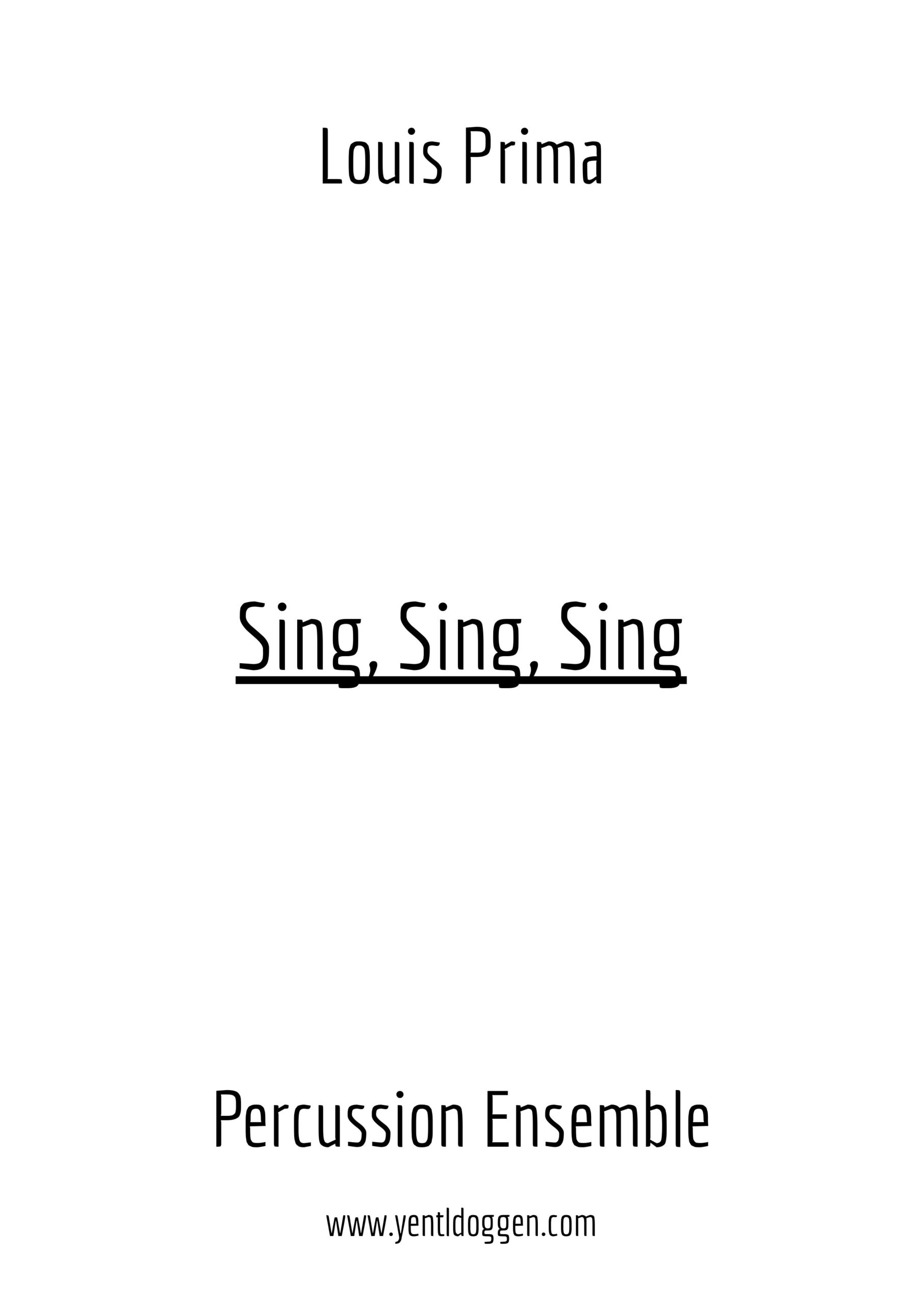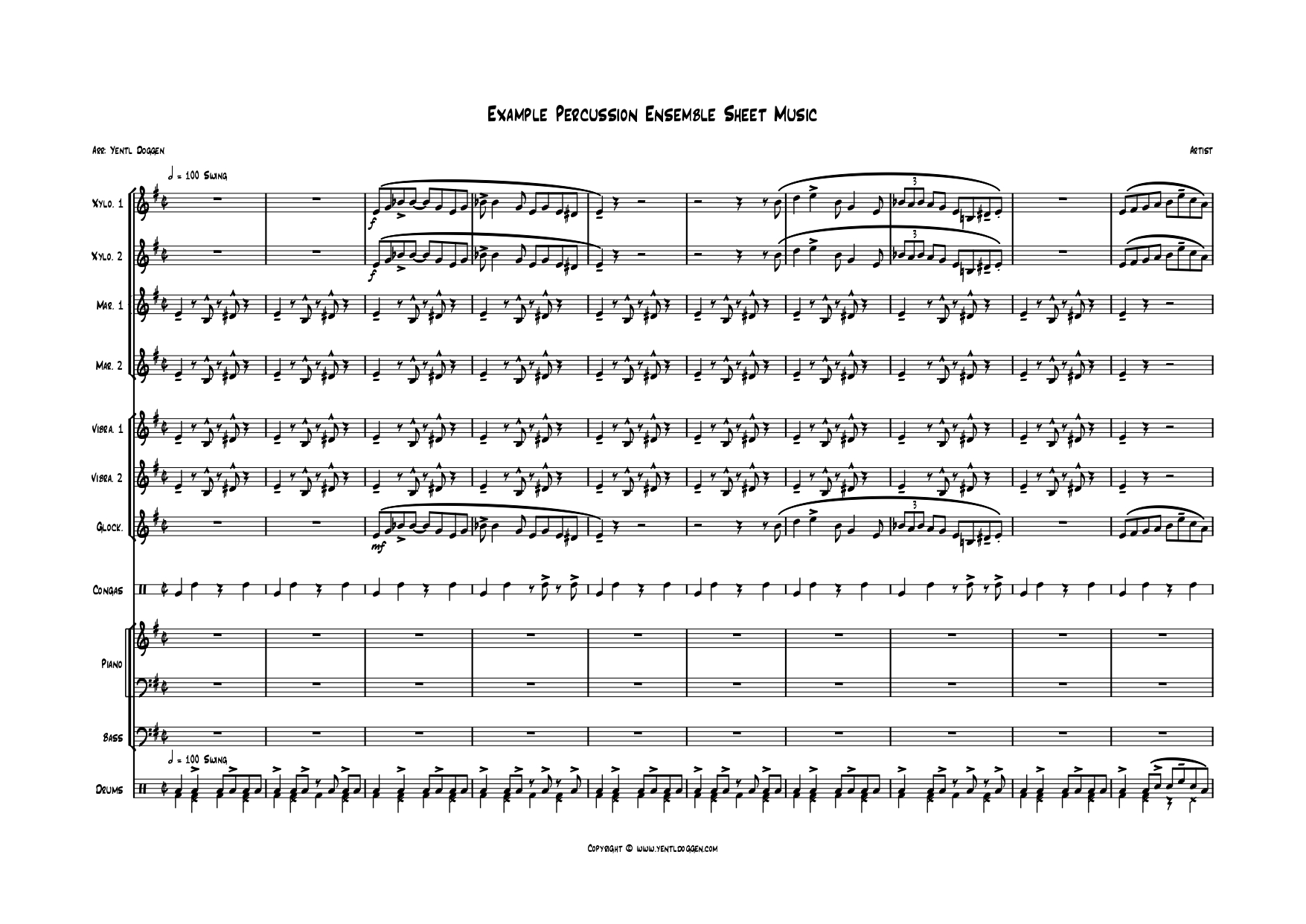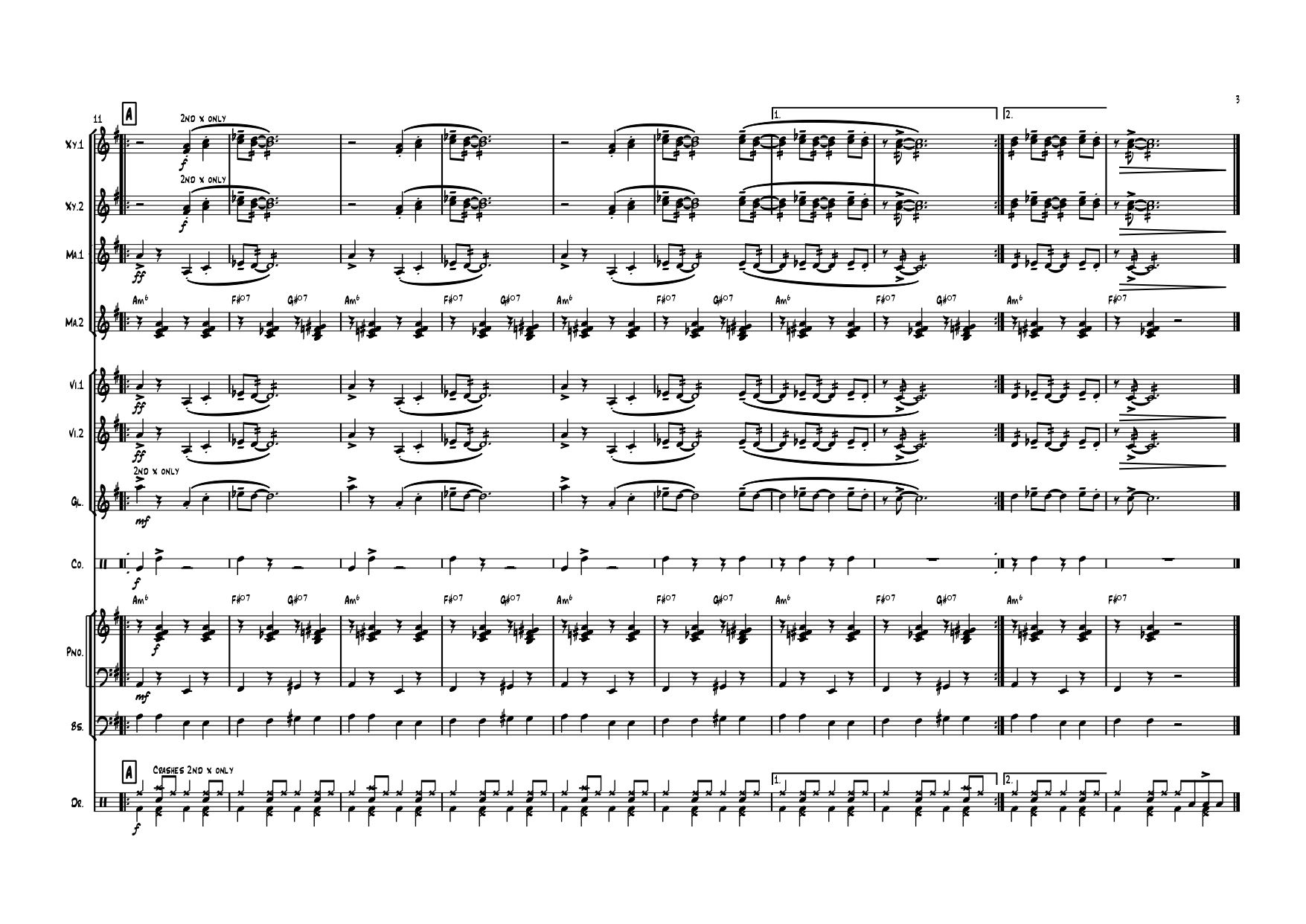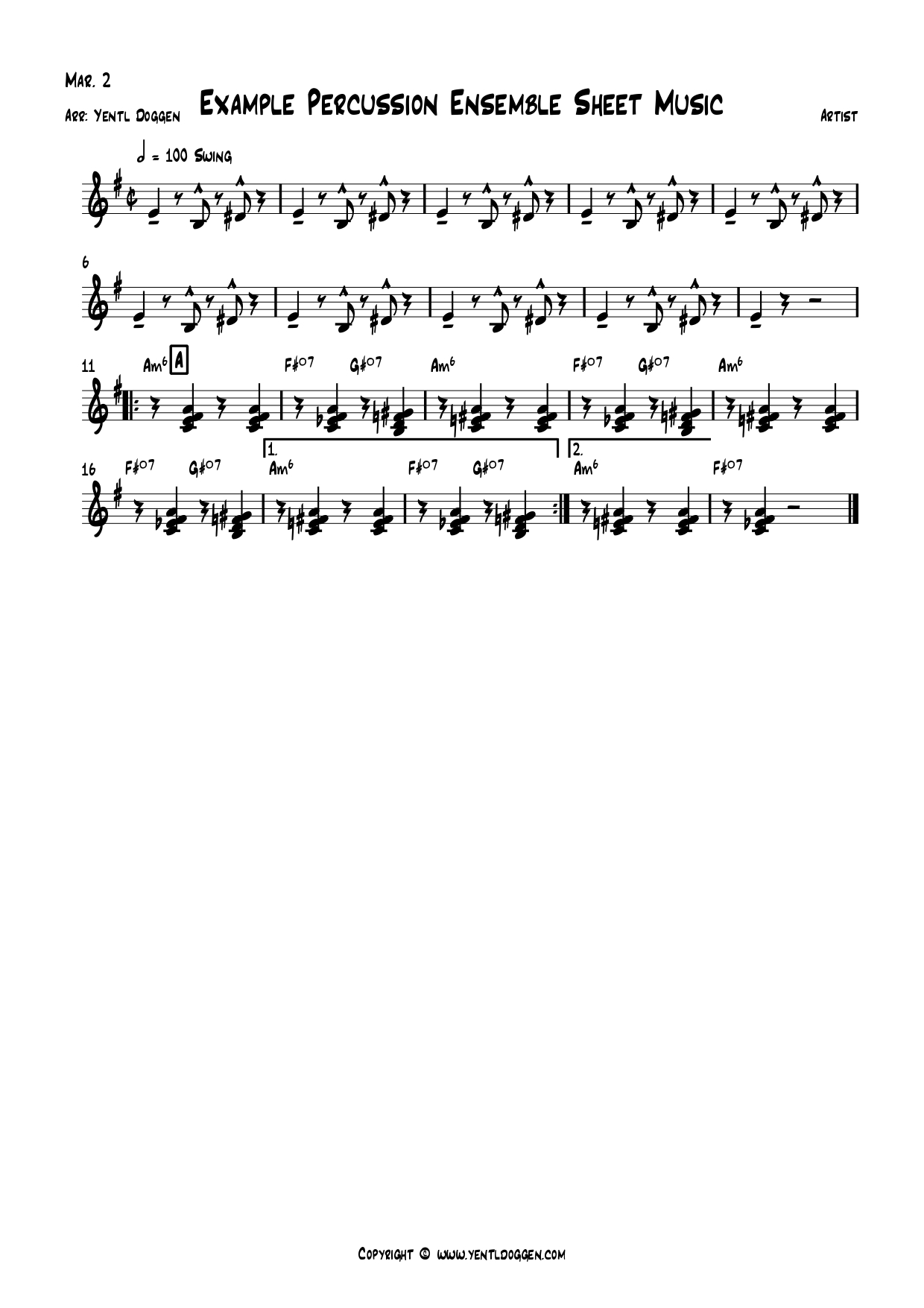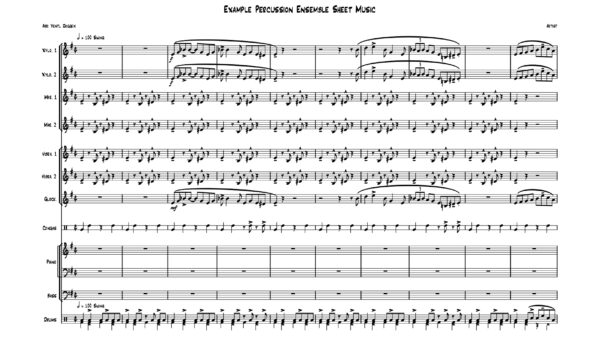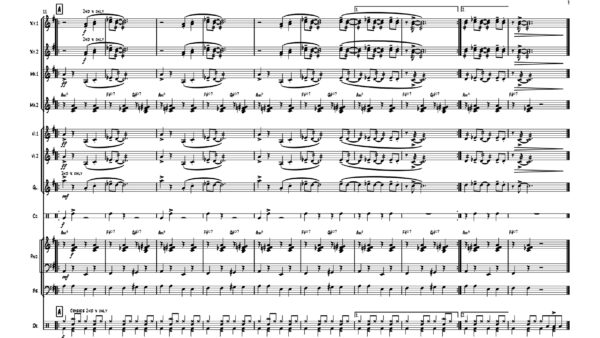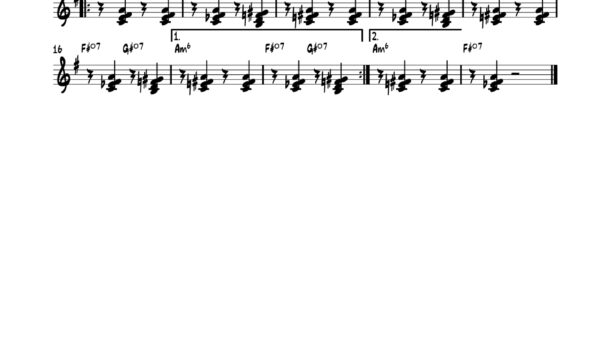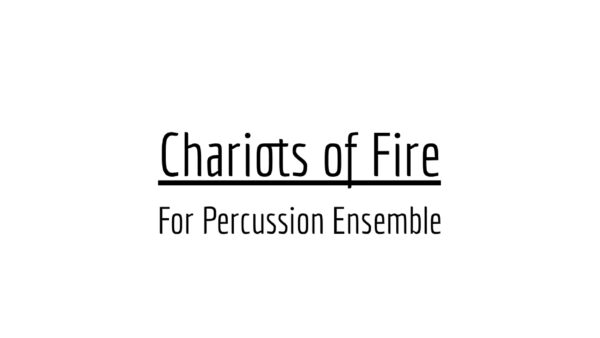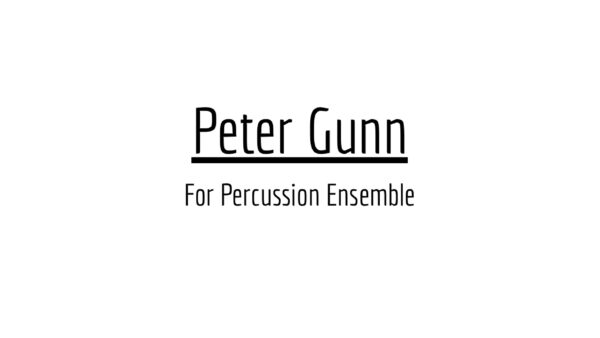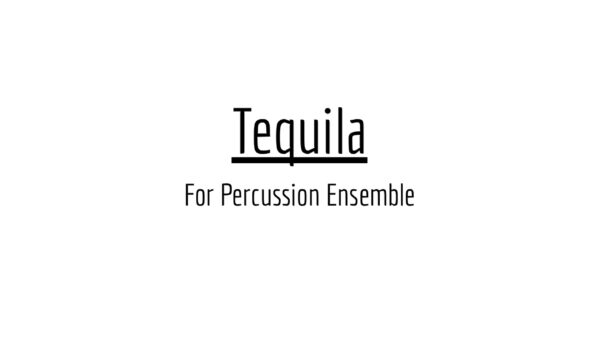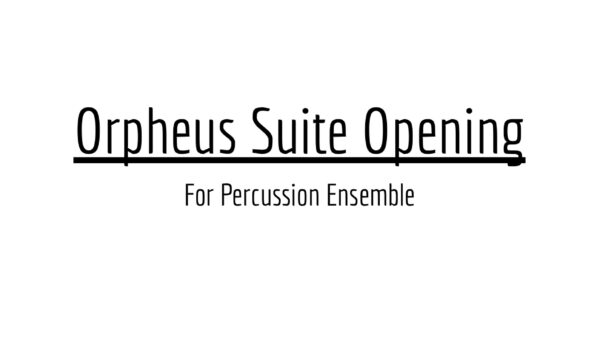Sing, Sing, Sing for Percussion Ensemble | Full Score PDF
Digital download (PDF) for the Sing, Sing, Sing for Percussion ensemble sheet music!
Sing, Sing, Sing
The 1936 big band song, Sing, Sing, Sing, with music and lyrics by Louis Prima, was first recorded by the New Orleans Gang. Becoming a real hit, plenty of other big bands performed the piece afterwards. The most notable recording my percussion ensemble piece is based on is the 6th of July 1937 recording by Benny Goodman. The recording also featured Gene Krupa on drums, undoubtfully the king of the Sing, Sing, Sing swing.
The first arrangement of Sing, Sing Sing for percussion ensemble was written when I was still in high school. Back then, I did a short internship at a local school and was not too fond of the music pieces they had lying around. It was a bit of a show-off to write this arrangement. Still, the internship landed me multiple jobs afterwards, making it a double win!
Between the first and the final version of Sing, Sing, Sing for percussion ensemble, it went through numerous transformations. I first re-wrote the whole arrangement for the Drum- & Percussionband Paal. This ensemble is the first to start playing the music piece regularly. Later, I rewrote everything again for the Meerhout Percussion Orchestra. The 9 to 11-player percussion ensemble format I’m presenting today is a mixture of both, which sounded the best. Here is more information on every part of this arrangement:
Sing, Sing, Sing for Percussion Ensemble:
Xylophones 1 & 2
If you have ever played one of my percussion arrangements, you know how much I love my xylophone parts. Even better, the cooperation between xylophone one and xylophone two is probably my favourite element in the arrangement and is incredibly fun to play for both players.
Wherever a lick in my arrangement of Sing, Sing, Sing has to be prominent, both the xylophones play it together. When the other mallets (marimba or vibraphone) support the licks in the arrangement, their unique cooperation makes them work as one. It is always one of the xylophones that gets the main melody and one that forms the counterpart. Throughout the song, this changes around multiple times, making it extremely interesting.
The best advice I can give to the two xylophone players is that once they know one of the parts, they change around and learn to play the counterpart. Changing around will make their cooperation one of the main foundations of the piece.
Marimba 1 & 2 and Vibraphone 1 & 2
Similar to the xylophone parts, marimba one & two and vibraphone one & two work closely together. Where one of the parts gets the leading hand, the other part usually gets the counterpart. Different to the xylophone, which has to find out by listening to each other whether their role is essential and has to be dominant in the piece, these parts don’t depend on one another. I want to say that these four parts are equally important at every stage throughout the song. When it comes to these parts, the advice is to let the xylophone sort out the dynamics in the music and focus on giving them the needed support and middle range throughout the whole piece. As I said, all are equally important, and they all create the mid-range of the song, even when they play the melody.
Glockenspiel
The Glockenspiel is by nature very prominent in a percussion ensemble, and although it plays most of the melodies in Sing, Sing, Sing, I like the Glockenspiel to be in the background. The advice I give to my Glockenspiel players? I don’t want to hear you, but I want to hear the difference when you are not playing. In other words, you are essential as a duplicate to all my melodies but not the leading melody player. In saying that, they should play all the notes on the Glockenspiel parts with an accent written down like a double accent! The arrangement needs the accented notes!
Piano and Bass
The piano and bass parts construct the basis of the melodic section in this arrangement. Although the bass part relates closely to the left hand in the piano, I recommend having both parts played individually. For the best results, the bass part should be played by an (electric) bass guitar. However, if that’s not available, the bass register of a marimba also adds to the desired effect.
If the piano player is comfortable playing the chord symbols, I highly recommend giving them the freedom to do it this way. The way the chords are written down in notes is just an example of the right-hand part of the piano. The piano and bass parts have a continuous bass line that they should play in a forward motion.
Drums & Congas
The drums and the congas construct the basis of the rhythmical section. The floor tom parts in the drumset have to be played loudly and enthusiastically, supported by some foundations on the congas. In all the melody sections (ride-cymbal), the drummer makes way for all the other parts and disappears into the background. From there, both players have only one mission, make this song swing as hard as possible.
As the original drums in Sing, Sing, Sing were recorded by one of the best big band drummers, Gene Krupa, the drum part has an essential role. Moreover, almost half of the song is drums by itself; therefore, this part needs a good and steady drummer. The conga player is here as support. Although it sometimes takes over elements of the melody, leaving the drummer in charge.
My website has multiple ways to keep in the loop with music and travel-related updates. Make sure to follow my Instagram and Facebook pages to get the latest content on your socials. To get the updates in your mailbox, subscribe to the newsletter. I will post plenty of free drum lessons and other music and drum-related advice on this website in the future! Check out the other music education posts if you haven’t already!


